From Painting to Digital 3D Art
This week I have a video that is made for all who love art and love creating art. It’s about my artistic journey from painting to digital 3D art. My new digital creations move and change color on screen and in virtual reality.
3D Art – Watch the Video!
I am currently making digital artwork in a three-dimensional world. I have received a grant for it from The Finnish Cultural Foundation. The project will continue until September 2024, but it has progressed to the extent that it is good to gather thoughts and show some results on a video.
The main programs I mentioned in the video are Nomad Sculpt, Blender, and Unity. My virtual glasses are Meta Quest 3.
The artwork is not finished yet. The most important thing that I need to do is the interaction with the viewer. I will also include sounds. Fortunately, the project still has five months left. The project is part-time, but on the other hand, breaks are good, because the ideas have time to grow.
Traditional 2D Meets Digital 3D
I understand that I am only at the beginning of everything that technologies make possible and where my artistic thinking can go. It’s exciting. For a long time, I have envied how the students of my painting and drawing courses have great enthusiasm to learn new things. Now I have this situation with digital art.
I am grateful to have been born in an era where all this is possible. With digital art, we have something Rubens and Kandinsky would envy. It would be wonderful to show them all this, even if it would be only just this video. I think a certain da Vinci would like to join Rubens and Kandinsky! There have always been artists who have wanted to see into the future and go on a journey to an unknown land. I think this attitude doesn’t break the tradition but keeps it alive.
What do you think?
Art Exhibition in Villa Albert
This week, I have photos from the group exhibition I am currently participating. It’s called Taiteilijat Edelfeltin tunnelmissa – artists in the mood of Edelfelt. And here are four of us from left to right: photographer Niclas Warius, painters Kristina Elo and me, and another photographer Maarit Lehto. The sculptor Kaj Lindgård is also in the exhibition, but missing in the photo.
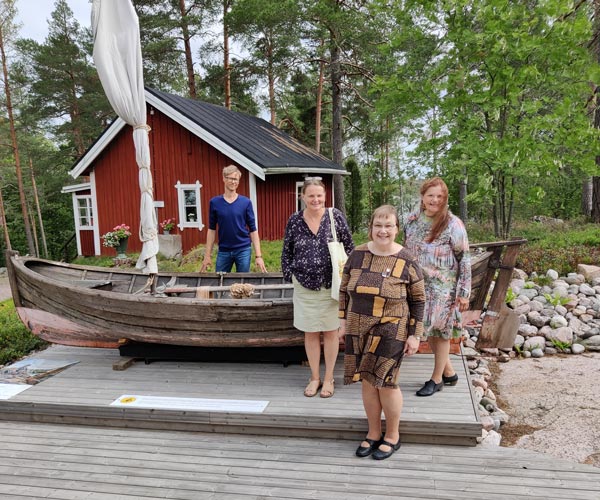
The red wooden cottage in the background is a summer studio of the famous Finnish painter Albert Edelfelt (1854-1905). It is in the possession of a private foundation Albert Edelfeltin säätiö that cherishes the memory of Edelfelt. Even if it’s just a small cottage, the location in Southern Finland is beautiful – near the sea and very near Porvoo, which is a small town popular with tourists.
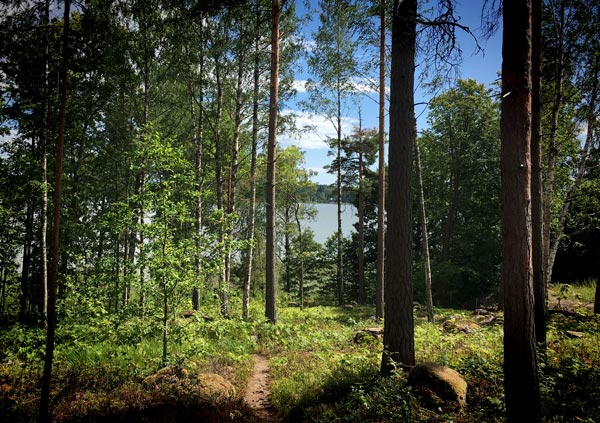
Albert Edelfelt painted here in summer and then went to France for winters.
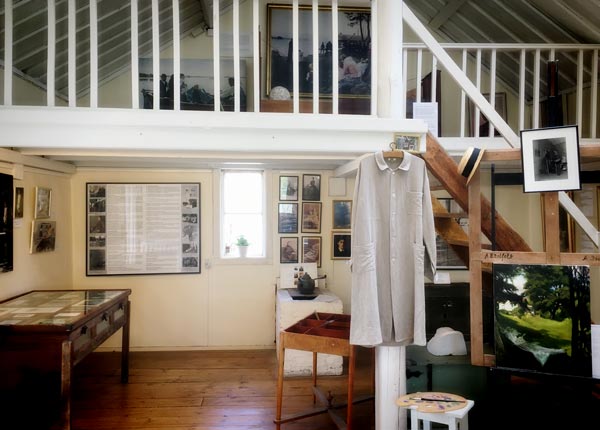
When you look at the studio from the sea, you can see the gallery Villa Albert behind it. The foundation built it in 2019.
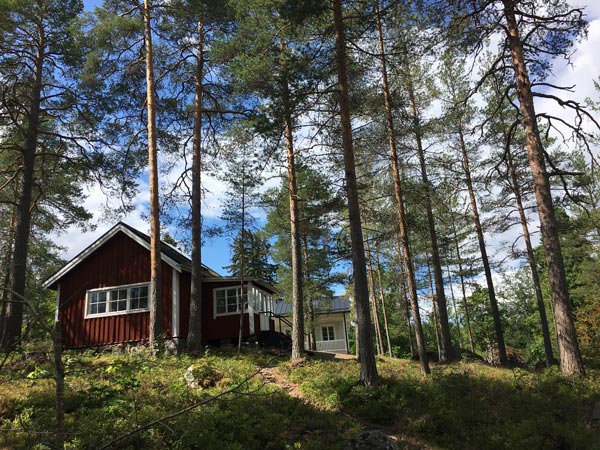
The gallery is a nice space with a small shop as well. All visitors who come to see Edelfelt’s studio, come first to the gallery to buy the tickets.
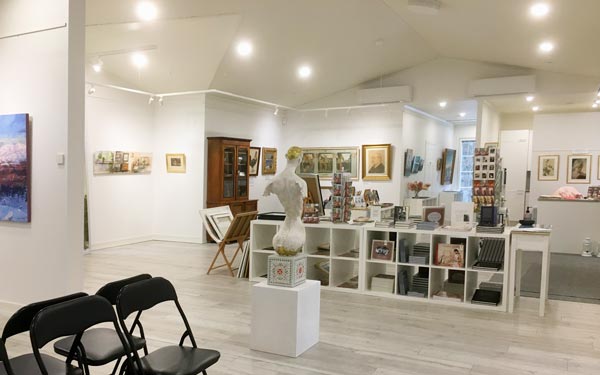
The head person of the gallery Hanna Kaarina Syrjäläinen is very skilled at hanging the exhibitions. I was so satisfied with how my paintings were displayed. Here an editor of a local magazine interviews me before the opening.
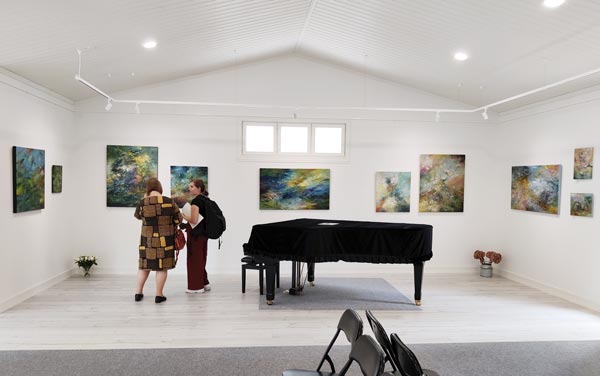
The foundation organizes concerts and other cultural events in the gallery. I think my paintings look great behind the grand piano!
I had 12 paintings in this space and four minis in a separate showcase.
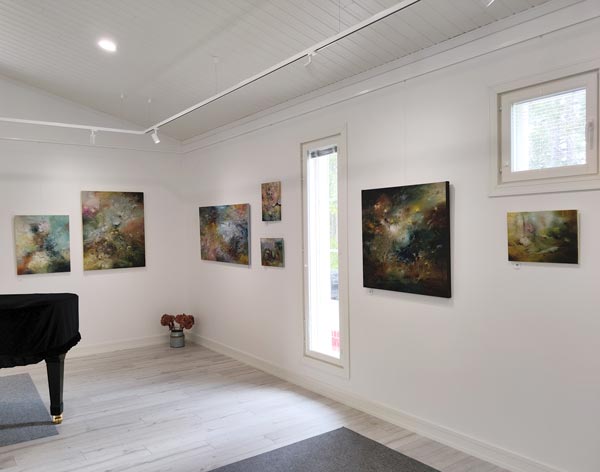
The gallery was full in the opening. The gallerist made a lovely speech about the exhibition.
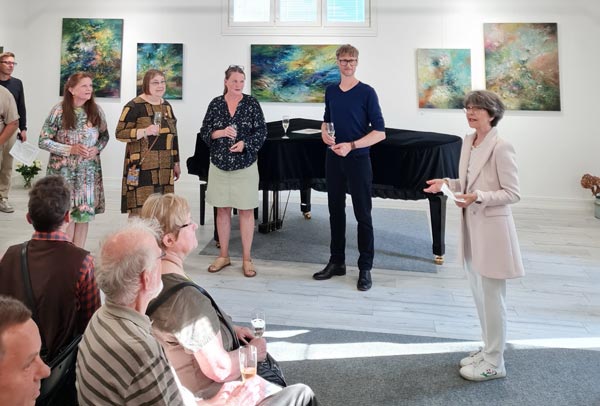
Unfortunately, I don’t have photos of the other artists’ pieces, but do visit these websites to see their work:
It is an honor to be in the company of these artists!
I had a good time in the opening meeting new people who like this kind of art that has a connection to art history.
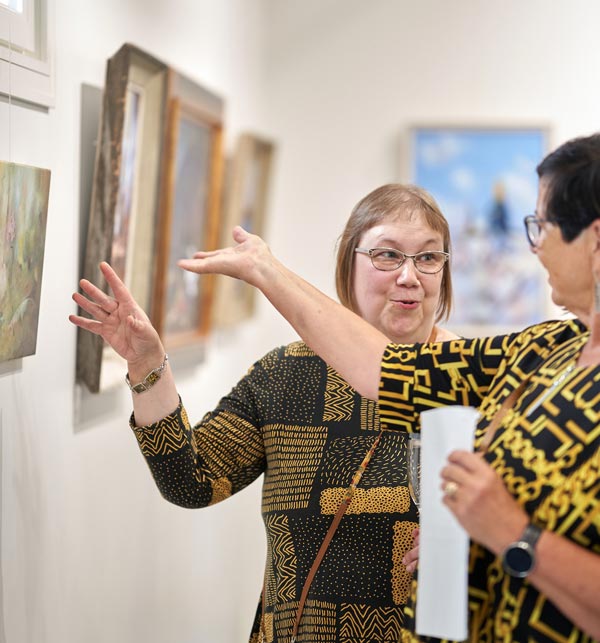
After working on the paintings alone for a long time, it’s so nice to hear what others see in them and tell about the creation process that started early this year.
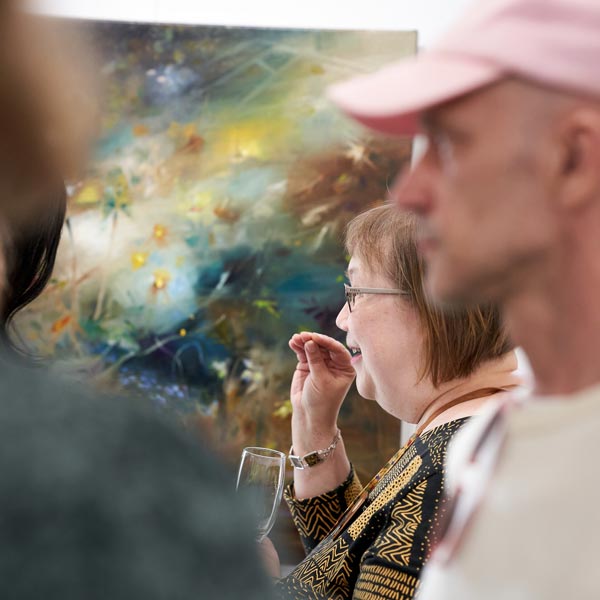
My paintings were mostly from this year, but there were some from the last year. I think it is a cohesive collection and as a whole, maybe best what I have presented so far.
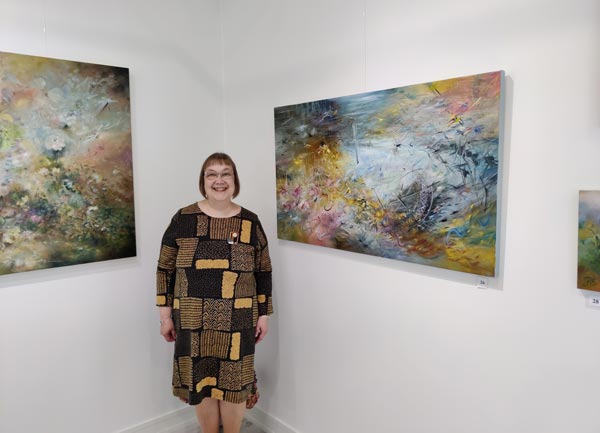
The exhibition continues until October 1st, so if you are in Finland this fall, do visit the Albert Edelfelt Studio Museum Villa Albert!
P.S. See the previous posts to see the paintings more closely. I still have a couple of pieces to show you, and now I feel the urge to draw, so more art to come in the next weeks as well!
Disappearing Garden – About Transience and Creating the Best You Can
I’ve been painting for the exhibition “Taiteilijat Albert Edelfeltin tunnelmissa – Artists in the Mood of Albert Edelfelt”, which is in August-September. Now I want to present the main work of my new series to you. It’s about transience and called “Katoava puutarha – Disappearing Garden”.
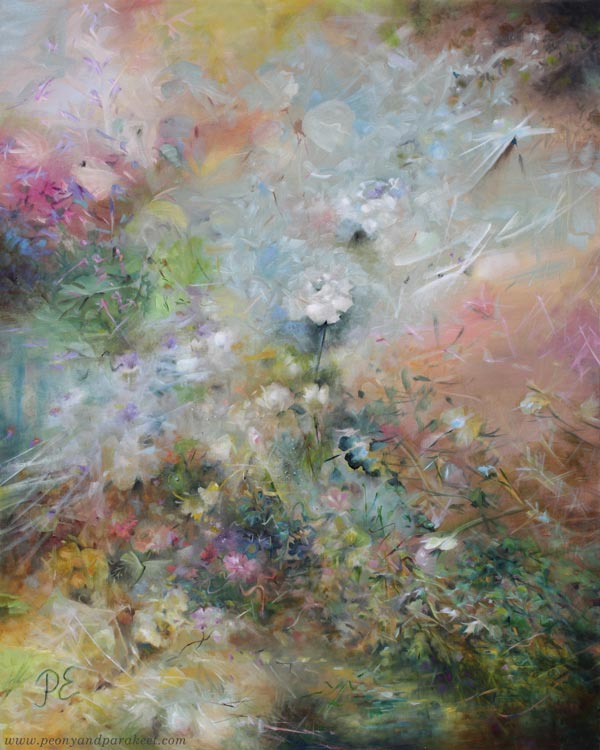
There is sadness in this painting. For years we had a neighbor who liked gardening. She fell ill and died and the rich garden has now been turned into a lawn. It made me think about how perishable we are, including our work. We are disappearing gardens, no matter how much we would like to think otherwise. So let’s enjoy our flowers while they still bloom!
Impression of an Old Painting
Disappearing Garden has many small details and a lot of work went into them. But because of the subject itself, it seemed important to spend time and patience on this work. I wanted to create the impression of an old painting that reaches across the eras as if overcoming its core problem: transience.
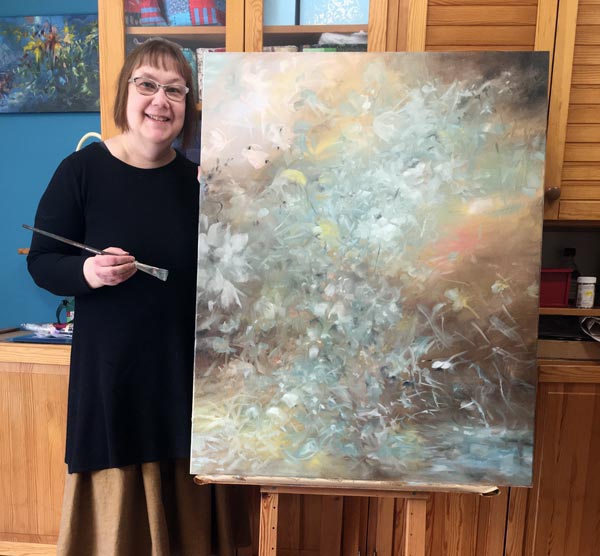
I usually make paintings in pairs, but this time I had a pair already ready: last year’s finished painting Queen of the Night. It is a dark shade and I wanted to make a light counterpart to it.
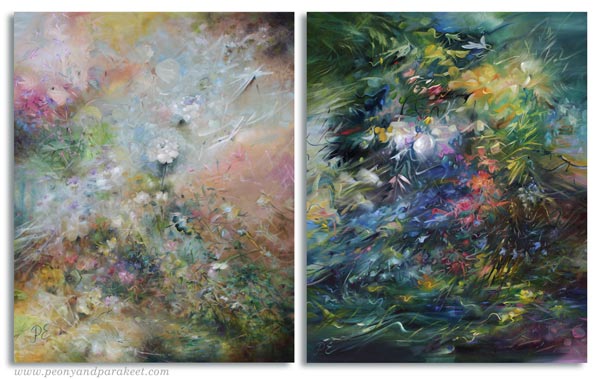
Both of these works are inspired by bygone eras: the 18th and 19th centuries.
About Transience and Creating the Best You Can
While painting The Disappearing Garden, I thought about how important it has been for me to practice a lot. But recognizing my transience, I now want to paint as well as I can. Life is hectic and a new start is always tempting. I can make dozens and dozens of nice and small pieces and collect likes with them. On the other hand, I can wait for the perfect time and perfect vision: question my artistic core and taste and where my focus should be.
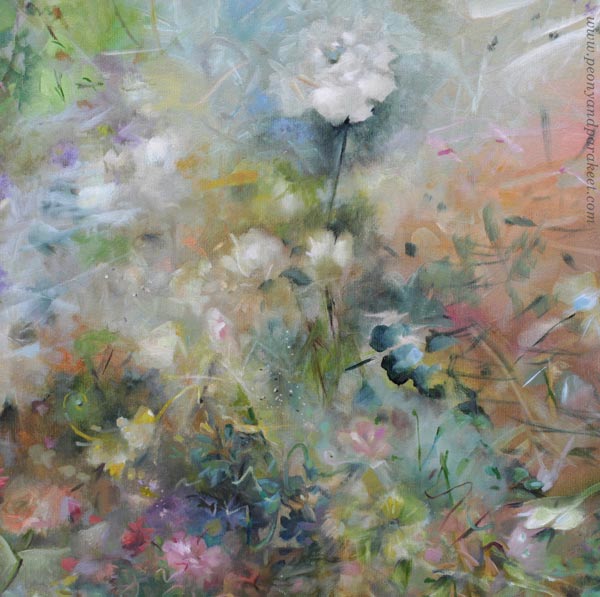
But it’s also so that life is constantly changing. If I don’t capture this moment, will I achieve anything? That’s why it felt important to give this painting as much attention as it wanted.
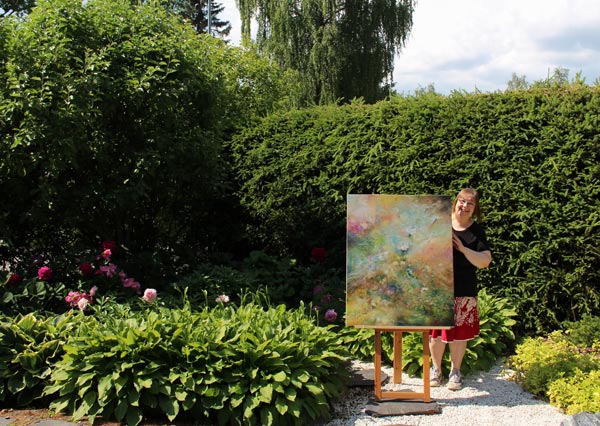
Do these thoughts resonate with you?
Everyday Life as an Artist
This post is about my current everyday life.
I was going to tell you that my life has been very ordinary lately: I wake up in the morning, take the dogs for a walk and start painting. In the evening, I practice my ideas with the ProCreate app or knit and let my subconscious work on art-making.
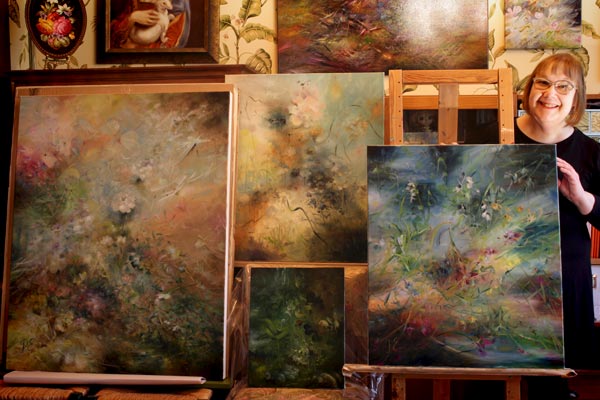
But if my dead parents heard about this life, they would claim that it’s not ordinary at all!
Visiting Exhibitions
Last week, I went to the big exhibition presenting the work of Albert Edelfelt at the Ateneum art museum in Helsinki. When I sat down to listen to seminar presentations about his work, my parents came to mind. They would have liked to see the exhibition. And they would be amazed to learn that I went to see it because of my work. I wanted to examine Edelfelt’s brush strokes in real life because I’m currently painting works for the show called “Taiteilijat Edelfeltin tunnelmissa – Artists in the Mood of Edelfelt.”
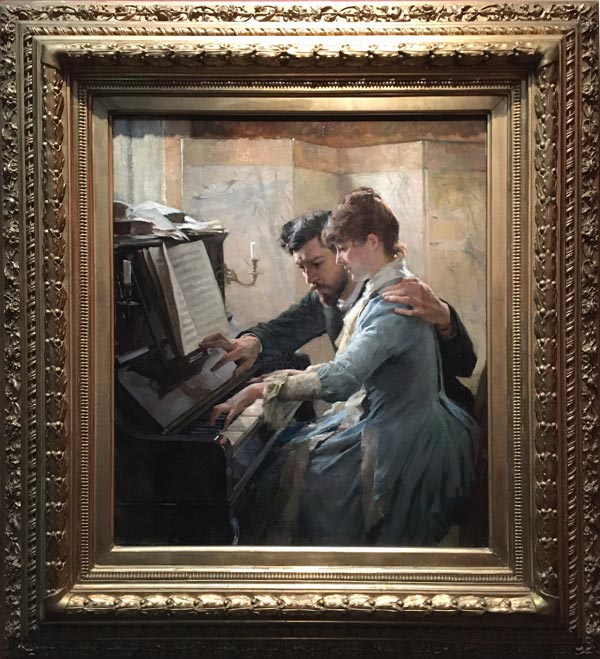
It’s important to me to see what other artists have created. It makes me feel connected, discover new techniques, and it inspires me to do things a bit differently than what I see. I often ask: what’s lacking if this would be my work? In the painting above, I would have added abstract elements on the top, depicting music.
Pressures of Everyday Life
All work becomes mundane when you do it systematically and goal-oriented. There will be pressures that you didn’t even think about in your dreams. You have to remember to order the supplies in time, plan the sizes of the paintings, the subjects, and the schedule for each one, pick up dog hair from unfinished works at the time of shedding, clean the paint tubes, wash the brushes carefully, wonder if anyone likes the painting and worry if it’s finished or not. Making a series of paintings is always a financial investment.
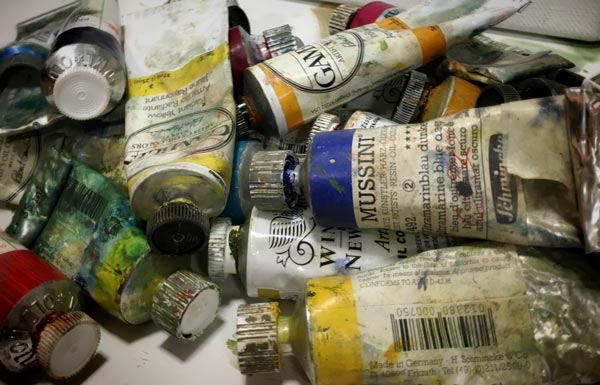
But when I am washing the floor from oil paint stains or doing something else mundane related to painting, I want to remember how wonderful it is to work on this project.
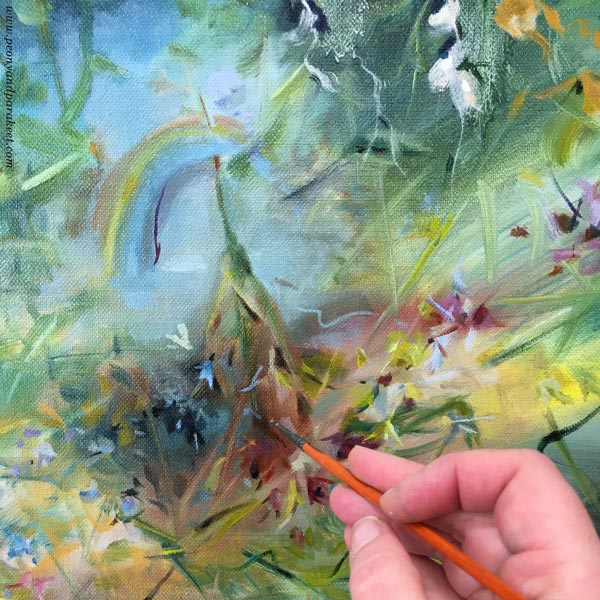
After all, I love art history, and the very thought that my paintings go to the place where Albert Edelfelt spent his summers is inspiring.
Everyday Ponderings
Lately, I’ve been thinking about why I always deal with longing in my paintings. I easily lean into nostalgia. Albert Edelfelt depicted people and landscapes realistically, but he also sometimes dealt with history and went back in time.
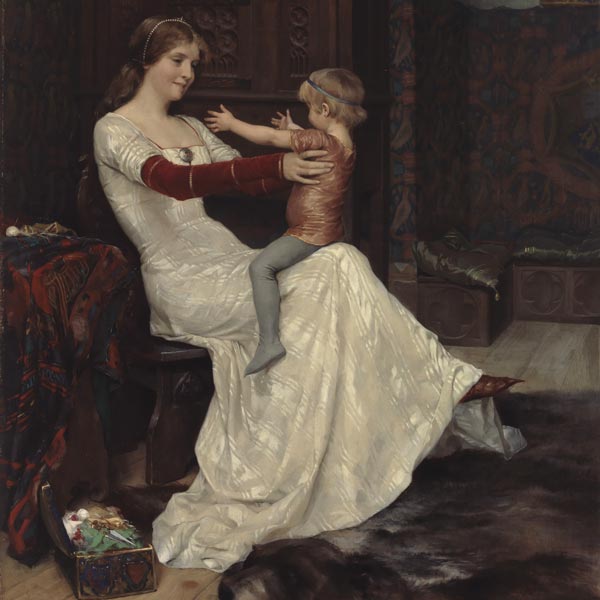
However, the difference between me and Albert is that he was interested in how things could have really happened and did detailed background research. I’m more inspired by how things could have gone differently.
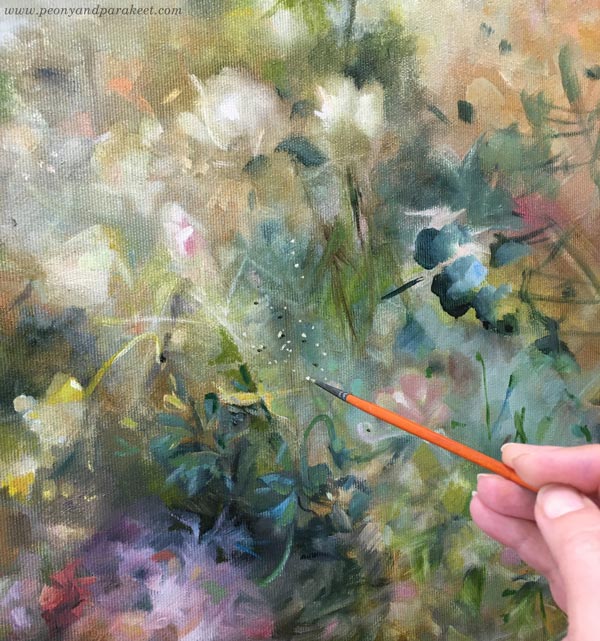
I don’t know how my parents thought my life would turn out. Many times it has gone differently than I would have guessed myself! Sometimes for good, sometimes for bad. Life as an artist is very unpredictable. Just when you think you have to stop, a new project comes up.
Everyday Task – Planning for the Future
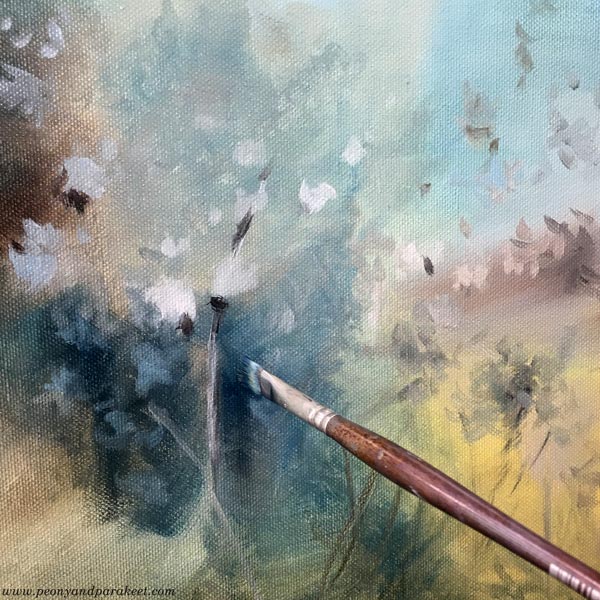
One of the hardest things in being an artist is to always move forward and think bigger. When this year’s plans are set, the next year begins to worry.
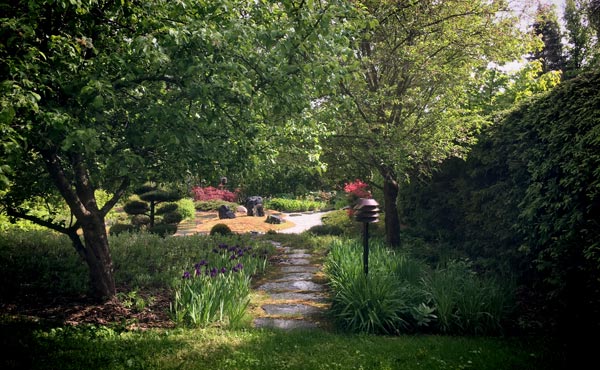
Artists are always in progress and very similar to gardeners. When a person says: “My garden is now finished,” you know that it’s the beginner speaking. Gardens are never finished!
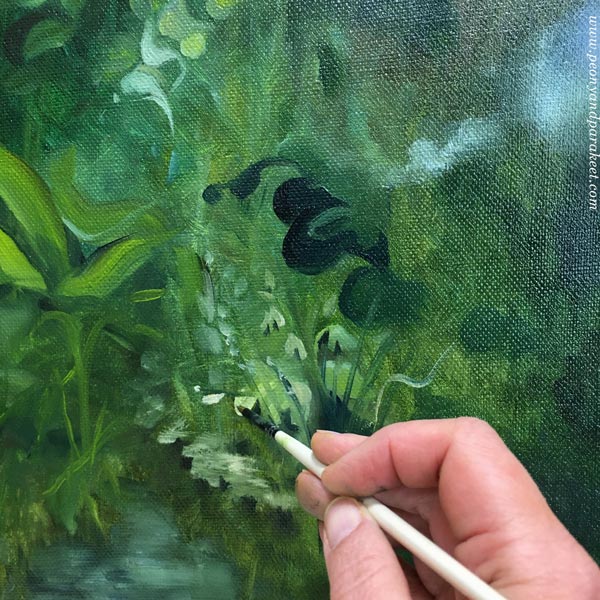
It’s the same thing with art – you will find yourself, but then you will change and have a new you to find. I try to get the most out of this everyday life because it too is about to change for sure.